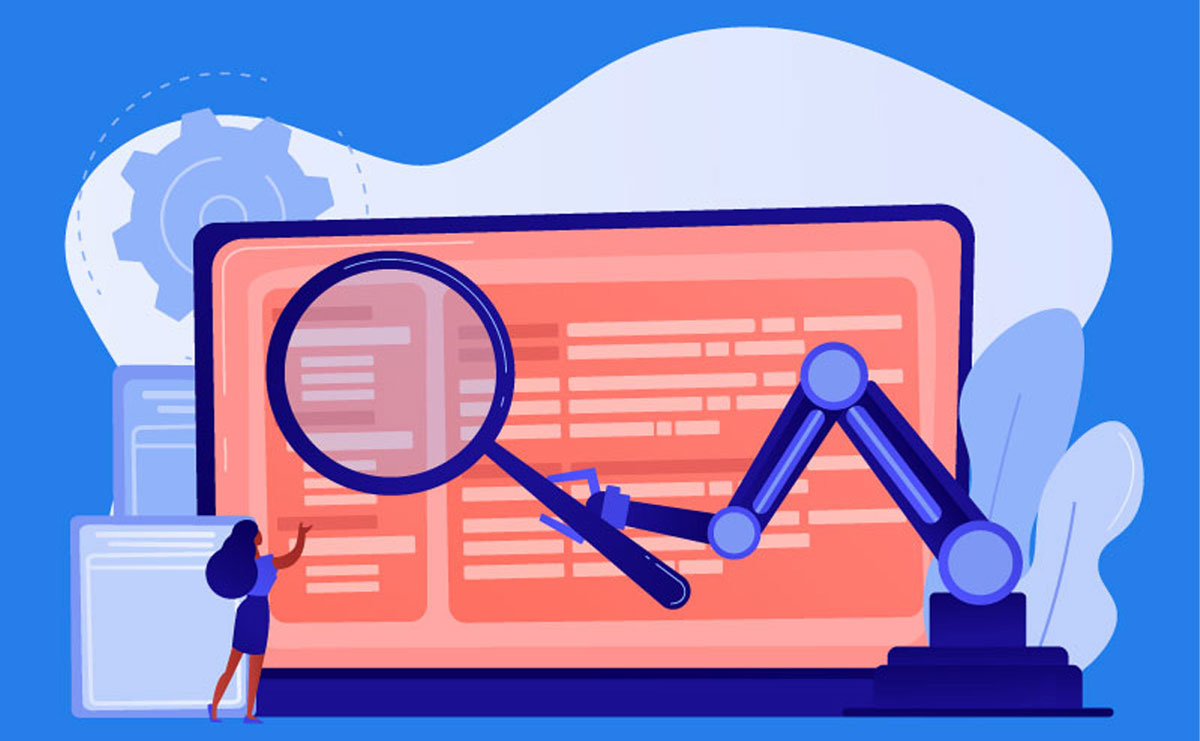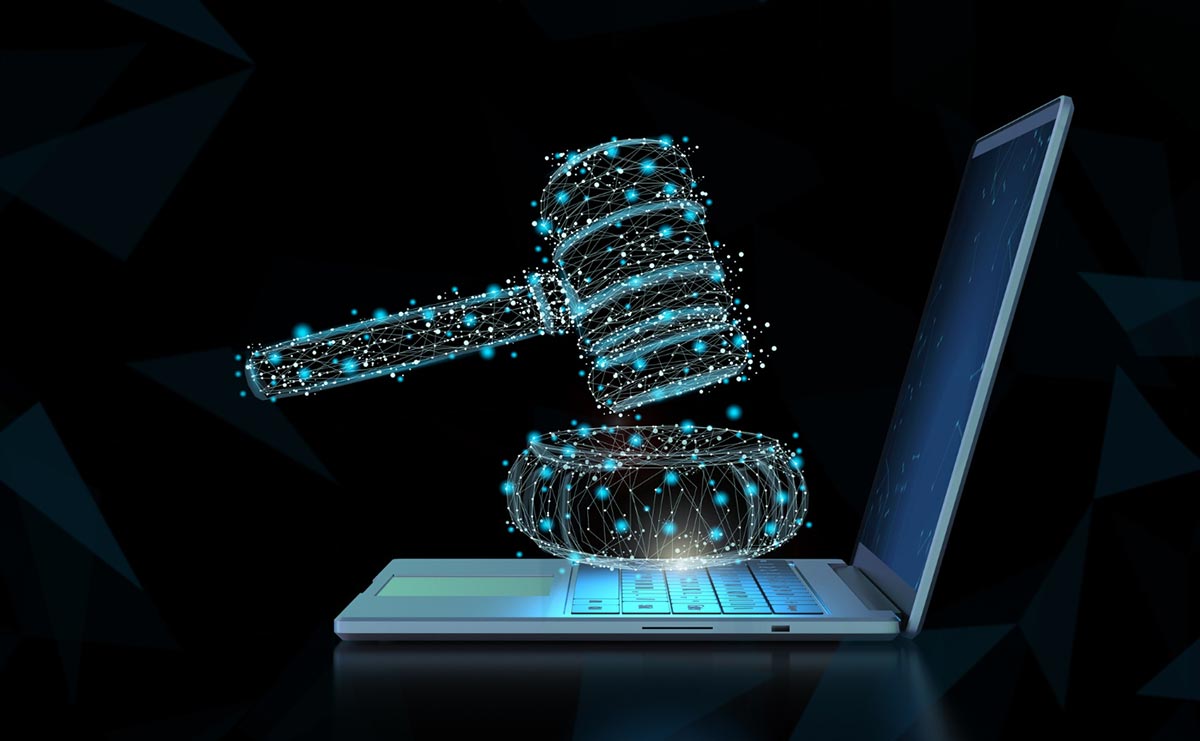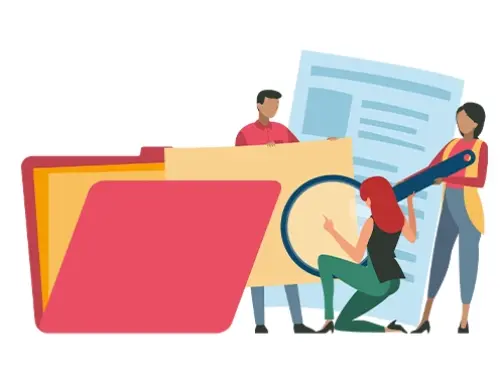Contents
How to Conduct E-discovery: Practical Advice for Law Firms
E-discovery, the process of managing electronically stored information (ESI) for legal purposes, is a cornerstone of modern litigation. With increasing volumes of electronically stored information, e-discovery for law firms has become an essential part of litigation strategy. In an era where digital data dominates personal, professional, and organizational communication, understanding and effectively handling e-discovery is essential for legal professionals. It not only involves identifying and preserving critical information but also ensures compliance with procedural laws and safeguards against ethical pitfalls. Legal e-discovery helps law firms maintain a competitive edge by streamlining digital document review and management.
This article delves into the complexities of the e-discovery process, offering practical insights and actionable strategies for navigating this digital legal terrain. From defining the scope of the e-discovery process to collaborating with opposing counsel, we will explore every stage of the process. Whether you are building your e-discovery plan, streamlining data collection and review, or ensuring compliance with stringent legal standards, this guide equips you with the tools to manage ESI efficiently and defensibly.
What is E-discovery?
E-discovery, or electronic discovery, is the process of harnessing the power of digital data. It involves identifying, collecting, preserving, reviewing, and exchanging electronically stored information (ESI) for use as evidence in legal cases. This process, a crucial aspect of modern litigation, manages vast amounts of digital data to uncover information that can either bolster or challenge claims in lawsuits, investigations, or regulatory matters.
E-discovery, a process guided by the firm handling of procedural laws and regulations, ensures compliance, protects privacy, and maintains data integrity. This structured process involves several stages, including data identification, legal hold, collection, processing, review, analysis, and production for use in court or settlement discussions.

Understand the Scope of E-Discovery
Before diving into the technical aspects, law firms must define the scope of e-discovery for each case. This foundational step ensures a straightforward, focused approach and minimizes wasted resources. Key elements include:
I. Understanding the Case Requirements: Embark on this journey by thoroughly analyzing the issues at hand and the role electronically stored information (ESI) plays in the case. This comprehensive understanding will equip you with the necessary knowledge to identify relevant ESI types, such as emails, text messages, financial records, social media interactions, and metadata. Additionally, assess the volume of data and the timeframes involved to ensure all relevant information is captured without unnecessary overreach.
II. Complying with Legal Standards: Legal compliance is critical in e-discovery. Familiarity with the Federal Rules of Civil Procedure (FRCP), particularly Rule 26 (duty to disclose) and Rule 34 (producing documents and ESI), is essential. Also, local jurisdictional rules and any unique legal requirements for specific industries should be considered, such as HIPAA for healthcare or GDPR for international data cases. Compliance ensures admissibility and avoids sanctions or penalties for improper handling.
III. Defining Custodians: Identifying key custodians—individuals or entities who possess or control relevant data—is a crucial organizational step. These custodians could include employees, contractors, or third-party vendors. Understanding who has access to what information helps streamline the collection process and prevents overlooked evidence. Early interviews with custodians can clarify data sources and reveal hidden repositories, giving you a sense of control over the process.
IV. Developing a Data Map: Creating a data map of the organization’s information systems, including servers, cloud storage, and offsite backups, can help ensure no critical data is missed. This map should outline where potential ESI is stored and highlight any unique challenges, such as encrypted files or legacy systems.
V. Establishing Scope Boundaries: Clearly define the parameters of the e-discovery process, including data types, date ranges, and search terms. This prevents “scope creep,” which can lead to unnecessary costs and prolonged timelines. Collaboration between legal teams and IT professionals is essential at this stage to ensure technical feasibility.
VI. Considering Privilege and Confidentiality: Identify privileged or confidential materials early in the process. Implementing a protocol for privilege reviews, such as using specialized software to flag sensitive documents, can save significant time and reduce the risk of accidental disclosure.
VII. Planning for Preservation: Proactively issue a litigation hold to relevant parties, instructing them to preserve all potentially relevant ESI. This includes halting routine data destruction processes like email auto-deletion or overwriting backup tapes. Taking this responsible step ensures that no crucial information is lost during the process.
By clearly defining the scope of e-discovery, law firms position themselves for a more efficient and defensible discovery process. These early steps lay the groundwork for smooth execution and help mitigate risks associated with incomplete or improper handling of ESI.
Create an E-Discovery Plan
A well-defined e-discovery plan is not just a best practice, but a necessity. Without it, legal teams risk inefficiency, non-compliance, errors, legal sanctions, and unnecessary expenses. By systematically addressing the challenges of managing ESI, a well-defined e-discovery plan streamlines the process and minimizes these risks. Key components include:
I. Legal Hold Implementation: Issue and monitor legal holds to ensure that relevant data is preserved and not accidentally deleted or altered. This step is critical for maintaining compliance and avoiding spoliation claims.
II. Timeline: Establish clear deadlines for data preservation, collection, review, and production. A well-planned timeline helps meet court-imposed deadlines and ensures all parties remain aligned throughout the discovery process.
III. Budgeting: Allocate resources effectively to avoid cost overruns. This includes estimating costs for data collection, review software, and legal expertise. Transparent budgeting helps prevent financial surprises and aligns expectations with stakeholders.
IV. Roles and Responsibilities: Clearly define the roles of all team members involved in e-discovery. From IT specialists to legal counsel, each individual should understand their responsibilities to ensure seamless collaboration.
V. Communication Protocols: Foster a sense of connection and collaboration by maintaining open and transparent communication among legal teams, clients, and opposing counsel. Establishing protocols for addressing issues or disputes promptly can save time and reduce conflicts. The demand for e-discovery services in law firms has grown with the rise of digital communication and cloud storage systems.
VI. Documentation: Keep meticulous records of all e-discovery activities, including data collection methods, review processes, and communication logs. Thorough documentation provides a defensible position in case of disputes.
VII. Evaluation and Iteration: Periodically assess the effectiveness of the e-discovery plan and make adjustments as needed. Continuous improvement ensures the plan remains aligned with changing legal and technological landscapes.
By incorporating these elements, legal teams can handle e-discovery efficiently while maintaining compliance, reducing costs, and achieving favorable outcomes.
Collect Data Efficiently
Expanding on the importance of balancing thoroughness with cost efficiency in data collection, it is essential to implement structured strategies prioritizing relevance, accuracy, and adherence to legal standards. Best practices include:
I. Leveraging Forensic Experts: Engaging certified forensic professionals is crucial in ensuring the integrity and reliability of the collected data. These experts, with their specialized skills, are adept at uncovering and preserving digital evidence. Their role is particularly critical in high-stakes litigation or regulatory compliance scenarios, where the risk of data tampering is high. By engaging these experts, organizations can significantly enhance the trustworthiness of their data collection processes.
II. Targeting Relevant Sources: A focused approach to data collection helps avoid unnecessary costs and excessive data management burdens. Organizations can streamline the process by identifying and targeting only the most pertinent data sources while ensuring all relevant information is accounted for. This approach also helps mitigate the risk of over-collection, which can lead to data privacy issues.
III. Ensuring a Robust Chain of Custody: Meticulously documenting data collection, transfer, and storage is vital for preserving its admissibility in legal proceedings. A ‘chain of custody’ refers to the chronological documentation of who handled the data, when it was handled, and for what purpose. This detailed documentation, including timestamps, handler details, and the purpose of access, establishes a clear chain of custody that can withstand scrutiny in court or regulatory audits.
IV. Implementing Advanced Tools and Technologies: Utilizing e-discovery software and automated data analytics tools can significantly enhance efficiency. These cutting-edge technologies enable faster identification of relevant data, reduce manual effort, and provide accurate insights while maintaining cost control, instilling confidence in the data collection process. Implementing robust e-discovery tools can significantly reduce the time and cost associated with document review in law firms.
V. Establishing Clear Collection Protocols: Developing and adhering to standardized protocols ensures consistency across data collection efforts. Protocols should include guidelines for scope, relevance, legal compliance, and review processes to minimize errors and redundancies.
VI. Conducting Cost-Benefit Analyses: Regularly evaluate the cost implications of data collection efforts against their potential impact on the case or investigation to ensure that resources are allocated efficiently. Decisions to collect certain data types should be guided by their likely contribution to achieving objectives.
VII. Training and Awareness: Ensuring that all stakeholders involved in data collection understand the legal and operational standards is crucial. Comprehensive training programs that address both technical and ethical aspects of data handling prepare individuals, reducing the likelihood of errors or non-compliance. Training staff in legal e-discovery best practices is essential for navigating complex cases involving large data sets.
These best practices enhance the efficiency and effectiveness of data collection and ensure that organizations remain compliant with legal requirements and ethical standards, ultimately contributing to successful outcomes in legal and investigative processes.
Review and Analyze Data
Reviewing data is often the most time-consuming part of e-discovery. Implementing strategies to enhance efficiency can save significant time and resources while maintaining accuracy. Here are some tips for streamlining the data review process:
I. Using Review Platforms: Embrace advanced e-discovery software with features like AI-powered tools, machine learning, and predictive coding. These platforms can automatically categorize data, identify relevant patterns, and flag potentially critical documents, relieving you from the burden of manual workload and reducing the time spent on tedious tasks.
II. Prioritizing Data: Focus on high-value documents using tools that allow prioritization based on keywords, metadata, or other filters. This ensures that the most critical information is reviewed promptly, avoiding delays in the discovery process.
III. Applying Search Terms Strategically: Develop targeted search terms to narrow down the scope of documents. Collaborate with subject matter experts to ensure the keywords capture relevant concepts while excluding irrelevant data.
IV. Implementing Document Clustering: Use tools that combine related documents for a more efficient review process. This allows reviewers to address similar topics or issues in batches, saving time and promoting consistency.
V. Streamlining Communication: Establish effective channels for collaboration among team members. Use project management tools to track progress, address questions, and maintain transparency.
VI. Minimizing Redundancy: Using deduplication tools, eliminate duplicate files and irrelevant data early in the process. This reduces the volume of data that needs to be reviewed and avoids wasted effort.
Integrating these practices into your e-discovery workflow can significantly enhance efficiency and reduce the time spent on data review while maintaining the quality and accuracy required for legal proceedings, giving you a sense of accomplishment in your work.
Ensure Compliance and Risk Mitigation
E-discovery involves navigating a complex landscape of legal and ethical obligations. To safeguard compliance and mitigate risks, law firms should take a proactive and comprehensive approach, including the following measures:
I. Implement Written Policies: Develop and enforce transparent, written policies and procedures for managing e-discovery. These should outline roles, responsibilities, and data collection, processing, review, and storage protocols.
II. Monitor Developments: Stay informed and prepared by keeping abreast of changes to e-discovery laws, regulations, and technological advancements. Subscribe to legal journals, attend industry conferences, and participate in webinars to ensure your firm remains compliant with evolving standards.
III. Conduct Risk Assessments: Regularly evaluate the risks associated with e-discovery, such as data breaches, inadvertent disclosures, or loss of critical information. Identify vulnerabilities in your current processes and take steps to address them.
IV. Use Secure Platforms: Invest in robust, secure e-discovery platforms that provide features like encryption, role-based access controls, and detailed audit logs. This investment will reassure you that your firm is protected from unauthorized access, data breaches, and inadvertent disclosures during e-discovery.
V. Preserve Evidence: Establish strict protocols for preserving electronic evidence, including issuing litigation hold notices to relevant parties and ensuring that data remains unaltered. This responsible and diligent approach is crucial in e-discovery.
VI. Audit Processes: Periodically audit your e-discovery processes to ensure policy adherence and identify areas for improvement. Use these audits to refine your approach and address any gaps in compliance.
By implementing these strategies, law firms can strengthen their e-discovery practices, minimize risks, and uphold their legal and ethical responsibilities. This proactive approach protects the firm and builds trust with clients and stakeholders.
Common Challenges in E-discovery and How to Overcome Them
E-discovery, the process of identifying, collecting, and producing electronically stored information for litigation or investigations, is both essential and challenging. The digital nature of data, its sheer volume, and the evolving legal standards make e-discovery a complex endeavor. Here are some of the most common challenges and strategies to address them:
I. Data Overload: The exponential growth of electronic data presents significant challenges in sorting, identifying, and collecting relevant information. To address this, leveraging advanced e-discovery software with AI capabilities can streamline the process by automating the identification and categorizing of pertinent data. Additionally, strict data retention policies help minimize the storage of unnecessary information, reducing the overall volume and enhancing efficiency.
II. Preservation and Spoliation Risks: Failing to preserve relevant electronically stored information (ESI) properly can result in spoliation claims and potential sanctions. To mitigate this risk, automated legal hold tools should be used to notify custodians and monitor compliance throughout the process promptly. Additionally, assessing potentially relevant data early ensures that all necessary information is identified and preserved appropriately.
III. Cross-Border E-Discovery Issues: The varying data privacy and discovery laws across jurisdictions can significantly complicate international cases. To navigate these challenges, it is essential to consult legal experts familiar with data protection regulations in the relevant regions. Also, implementing in-country data processing ensures compliance with local laws and reduces the risk of legal complications.
IV. Inconsistent Data Formats: Data often exists in diverse formats, such as emails, text messages, and databases, making standardization a challenging task. To address this issue, it is important to utilize tools capable of supporting multiple data formats and converting them into consistent formats for analysis. Furthermore, standardizing software and file formats across the organization can streamline processes and improve overall efficiency.
V. Lack of Expertise: Many legal teams lack expertise in e-discovery processes and technologies, hindering efficiency and accuracy. Investing in training programs for legal professionals on e-discovery tools and best practices is essential to bridge this gap. Collaborating with e-discovery consultants or hiring in-house experts can provide the specialized knowledge to navigate complex e-discovery challenges effectively.
VI. Difficulty Managing Social Media and Emerging Data Sources: Social media, collaboration platforms, and ephemeral messaging apps introduce additional complexity to the e-discovery process. To manage these challenges, organizations should establish clear policies governing the use of these platforms in the workplace. Employing e-discovery solutions designed to collect and analyze data from non-traditional sources ensures that all relevant information is effectively captured and processed. With advancements in technology, legal e-discovery now includes tools for reviewing emails, text messages, and social media content.
VII. Meeting Tight Deadlines: Courts and regulators frequently impose strict deadlines for e-discovery, leaving minimal room for error. To meet these demands, organizing and categorizing data proactively before litigation arises is crucial. Further, selecting scalable tools capable of handling sudden increases in data volume ensures efficiency and preparedness for tight timelines.
Collaborate with Opposing Counsel
Proactive collaboration with opposing counsel is crucial for minimizing disputes and ensuring the legal process runs efficiently. Open communication and mutual understanding can turn potential conflicts into opportunities for compromise, ultimately benefiting both parties. Establishing open lines of communication is a foundational step in collaboration. Regular check-ins allow both sides to clarify expectations, address misunderstandings, and ensure alignment on deadlines and deliverables. The use of technology, such as secure collaboration platforms, is not just a convenience, it is a powerful tool that further enhances efficiency by streamlining the exchange of updates and documents.
Participating in meet-and-confer sessions is another effective collaboration strategy. These discussions provide a platform to address critical issues like data preservation, the scope of discovery, and production formats. To maximize the effectiveness of these sessions, it is important to enter with clear objectives and a collaborative mindset. Treat these meetings as opportunities to solve logistical challenges rather than as adversarial encounters. Documenting agreements made during these discussions ensures accountability and minimizes future misunderstandings.
Maintaining transparency throughout the legal process fosters trust and cooperation. While maintaining confidentiality is crucial, providing detailed information about data collection, review methodologies, and sources reduces uncertainty and establishes credibility. If there are limitations, such as inaccessible data or prohibitive costs, addressing these issues early allows for identifying mutually acceptable solutions. Transparency also extends to sharing challenges, ensuring both parties work toward practical resolutions.
Resolving conflicts early is not just a good idea, it is essential to avoid escalation into costly and time-consuming motions. Engaging a mediator or neutral third party can facilitate discussions and help both sides find common ground when disagreements arise. Emphasizing cost-effective solutions, such as narrowing the scope of discovery or agreeing to prioritize certain data sets, can prevent disputes from derailing the process. Focusing on shared goals and mutual respect during these interactions fosters a professional and constructive environment.
Encouraging innovative solutions is another way to streamline collaboration. For example, technology-assisted review (TAR) and predictive coding can expedite the review process while maintaining accuracy. Piloting smaller portions of data before implementing broader protocols ensures both parties can evaluate the feasibility and effectiveness of proposed methods. These innovations not only improve efficiency but also demonstrate a commitment to problem-solving.
Collaboration with opposing counsel delivers significant benefits. By addressing disputes proactively, attorneys can reduce delays and avoid protracted court interventions. Cooperation on discovery protocols and production formats also minimizes costs and saves resources. Additionally, positive interactions with opposing counsel can build relationships that lead to smoother negotiations in future cases. Ultimately, this collaborative approach ensures fair and equitable outcomes that serve the best interests of all parties involved.
Final Thoughts
E-discovery is no longer a peripheral aspect of legal practice—it is a pivotal component that demands strategic planning, technological savvy, and legal expertise. As this guide has outlined, navigating the complexities of e-discovery requires a proactive, organized approach that balances efficiency with compliance and risk mitigation.
From defining the scope of discovery to implementing advanced tools, each step in the e-discovery process serves to ensure that legal professionals can handle electronically stored information (ESI) with confidence. By adhering to best practices, fostering collaboration, and embracing innovative solutions, law firms can overcome challenges, reduce costs, and achieve favorable outcomes for their clients.
In a world where digital data continues to expand exponentially, mastering e-discovery is not just about managing information—it is about leveraging it strategically to uphold justice and advance your case. Whether you are a seasoned litigator or new to the field, staying informed and adaptable is key to thriving in the ever-evolving landscape of modern litigation. Many small and mid-sized law firms are adopting cloud-based e-discovery solutions to remain competitive in the digital age. Using AI-powered tools in legal e-discovery, the team quickly identified critical evidence buried in terabytes of data.
Take Your Legal Team to the Next Level with RunSensible
Empower your legal team with tools to simplify workflows, enhance collaboration, and optimize performance. RunSensible provides a comprehensive suite of features for legal teams, including robust case management, contract lifecycle tracking, and automated compliance tools. With intuitive document management, seamless client communication, and real-time analytics, your team can focus on delivering results rather than juggling administrative tasks.
Whether you are managing contracts, handling client intake, or overseeing legal operations, RunSensible equips your team with the technology to work smarter, not harder. Explore how RunSensible’s all-in-one platform can revolutionize your legal department today and keep your organization ahead in a competitive legal landscape. Request a demo now and see how RunSensible can transform your team’s efficiency!
FAQs
1. How can law firms manage large volumes of data during e-discovery?
To manage large data volumes effectively, law firms can use data filtering techniques such as keyword searches and date ranges to narrow down relevant information. Leveraging artificial intelligence and machine learning for predictive coding streamlines the review process. Implementing robust data management and storage systems ensures organized and secure handling of electronic data, making it easily accessible when you need it.
2. What are the risks of improper e-discovery?
Improper e-discovery can lead to sanctions or penalties for spoliation of evidence, adverse case outcomes due to missing critical evidence, and increased costs and delays in litigation.
3. How do courts handle disputes over e-discovery?
Courts often encourage parties to collaborate and resolve e-discovery disputes. If disputes arise, courts may issue rulings based on factors like proportionality, relevance, and the burden of production.
4. How can small law firms conduct e-discovery effectively?
Small law firms can effectively manage e-discovery by outsourcing it to specialized vendors. This helps reduce the burden on in-house resources while ensuring professional handling of electronically stored information (ESI). Leveraging cost-effective, cloud-based e-discovery tools can further streamline the process, providing scalability and advanced functionalities tailored to small firms. Additionally, fostering collaboration and maintaining clear communication with clients and IT teams is essential to ensure a smooth workflow, accurate data collection, and compliance with legal requirements.
Disclaimer: The content provided on this blog is for informational purposes only and does not constitute legal, financial, or professional advice.






